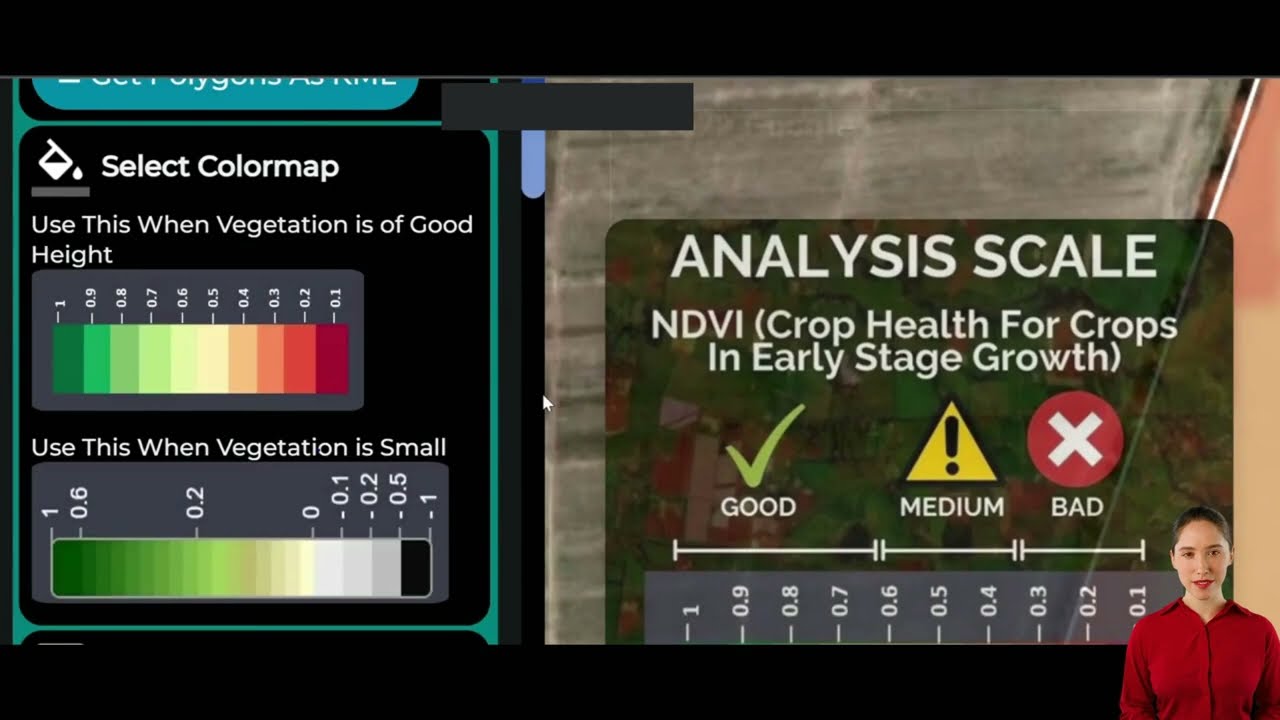Hamilton Montana Jobs Crisis: 7 Key Impacts on Local Economy
“Bitterroot National Forest job cuts could reduce Hamilton’s local income by up to 12% this year alone.”
Summary: In the heart of Hamilton, Mont., a picturesque town of 5,000 residents surrounded by mountain wilderness and the scenic Bitterroot River Valley, the winds of economic change have brought concern and uncertainty. For decades, reliable federal employment—from the Rocky Mountain Laboratories to the Bitterroot National Forest—has been a cornerstone of local stability and prosperity. However, recent staff reductions, funding cuts, and federal policy shifts now threaten the very fabric of the Hamilton Montana jobs market and the broader Montana local economy.
As main street businesses in Hamilton brace for economic aftershocks, and community leaders voice concerns over public safety and lost opportunity, it has become essential for all of us in the region to explore the causes, scale, and long-term impacts of these ongoing federal employment reductions. In this comprehensive blog, we will spotlight the seven most critical impacts of the Hamilton Montana jobs crisis, analyzing the consequences for employment, local businesses, public services, safety, and even the character of our cherished community.
Introduction: Hamilton’s Economic Foundation and Challenge
Hamilton, set amidst the beautiful backdrop of the Bitterroot National Forest and the rocky mountains, has long stood as a beacon of rural vibrancy and resilience in western Montana. Our city is celebrated for its thriving main street businesses, such as the department store that has remained steadfast for over 75 years and the bustling art galleries and cafes which attract both locals and tourists. Yet, beneath this vibrant façade, our economic stability is now being tested by dramatic changes in federal jobs in Montana.
For decades, federal employment at agencies like the Rocky Mountain Laboratories (NIH) and the Bitterroot National Forest Service has provided a critical foundation for families, schools, and local businesses. These roles did not offer just stability and above-average salaries but also contributed to the social and cultural lifeblood of our small town. However, recent cutbacks and staff reductions have led to a crisis of confidence, raising profound community concerns about our ability to maintain economic and social progress. This is the story of how government employment cuts can ripple outwards, affecting us all.
Understanding the Crisis: Why Hamilton Montana Jobs Are at Risk
The Hamilton Montana jobs crisis is rooted in aggressive efforts by the federal government to shrink its workforce and reduce public spending. Both the Rocky Mountain Laboratories—a world-renowned National Institutes of Health facility— and the Bitterroot National Forest Service have experienced staff reductions that are sending economic and social shockwaves through our county and community. The impact of these cuts is profound due to three primary factors:
- Federal jobs in Montana often represent higher wages and specialist skills, supporting both employees and supporting households.
- Federal employees contribute not just to GDP, but also to public services, volunteering, and broader community activities.
- Losses are concentrated and magnified in smaller rural towns like Hamilton, intensifying the economic impact of government cuts compared to larger urban centers.
Forest service staff reductions and the winding down of key research at the Rocky Mountain Laboratories put at risk not just the direct jobs at stake, but also secondary employment, local business health, public safety (particularly in wildfire management), and even Hamilton’s sense of community.
Impact Summary Table
The following table summarizes the seven key impacts of the job crisis in Hamilton, Montana, capturing the estimated losses and affected populations for each sector. These figures illustrate the cascading consequences of federal cuts across our local economy and society.
| Impact Area | Estimated Jobs Lost | Estimated Revenue Loss ($) | Affected Population | Short Description of the Impact |
|---|---|---|---|---|
| Direct Employment | 80-100 | $8M – $12M | Over 200 families | Loss of stable, high-paying federal jobs for scientists, staff, and support workers. |
| Local Businesses | 50-70 indirect | $3M – $6M | 150+ businesses | Reduced spending at shops, motels, and services due to fewer researchers and federal employees. |
| Public Safety/Fire Services | 20-30 | $1.5M | Whole county | Strain on fire management, leading to increased fire risk and reduced service effectiveness. |
| Community/Civic Activities | N/A | Difficult to estimate | Hundreds | Loss of volunteers and engaged citizens who organize and support civic life. |
| Real Estate & Services | 20-30 | $2M – $4M | Buyers & Renters | Decrease in housing demand, falling rental prices, and stagnant property values. |
| Education & Volunteers | 10-15 | N/A | Students, local orgs | Loss of mentors, science program volunteers, and active parents in schools. |
| Research & Innovation | 25 (min) | $6M | Regional & global | Halted studies, innovation setbacks, and loss of skilled minds impact Montana’s future potential. |
“Over 150 Main Street businesses in Hamilton risk closure due to recent federal employment reductions.”
1. Employment Losses: Direct and Indirect Job Reductions
Focus Keyword: Hamilton Montana jobs and forest service staff reductions
The most immediate and visible consequence of the current crisis is the direct loss of employment among federally supported staff. Nearly 25 scientists and support workers at Rocky Mountain Laboratories have already exited, with more planned by the end of the year. At the same time, the Bitterroot National Forest employment has been gutted by the departure of 30 to 40 professionals, including forestry managers, fire personnel, and specialist technicians.
- For a town the size of Hamilton, every federal employee loss ripples through dozens of households and businesses.
- The average federal salaries in these sectors far outpace private service wages, so each lost job removes a key source of economic stability.
- Secondary losses include jobs at motels like those operated by Casper, as well as local eateries, print shops, and supporting services.
Not only is the direct employment base shrunk, but the economic impact of government cuts also multiplies as former workers leave town, halting spending, home rentals, and school enrollment. These losses, although only 4% of county jobs, account for 8% of local wage earnings and create an outsized risk for a rural montana local economy.
2. Local Business Disruption: Main Street Feels the Heat
Focus Keywords: Main street businesses Hamilton, economic impact of government cuts
The heart of Hamilton beats through its bustling main street, lined with independent retailers, homegrown stores, restaurants, and service providers. The loss of key federal jobs and recurring guests such as visiting researchers and forest service staff instantly decreases daily revenue across these establishments.
- Casper’s City Center Motel lost nearly 10% of annual revenue following laboratory booking cancellations.
- Printing shops, eateries, cafés, and event venues count on federal events, conferences, and government business.
- Secondary industries—catering, transportation, cleaners—lose contracts as operational budgets at the labs and forest service dwindle.
Most affected businesses operate with slim profit margins and few reserves. When vital revenue sources dry up, more than 150 businesses could face closure, underscoring deep community concerns Montana about the sustainability of main street businesses Hamilton.
3. Public Safety Risks: Fire Management and Emergency Readiness
Focus Keywords: Bitterroot national forest employment, ravalli county public funding
Ravalli County sits amid high-risk wildfire country, where the Bitterroot National Forest not only provides recreation but also a first line of defense against mountain blazes. The forest service staff reductions could have immediate negative consequences for public safety:
- Fewer trained workers means less capacity for preventive maintenance—such as clearing trails, removing deadwood, and managing controlled burns.
- During the peak fire year, operational firefighters and emergency leaders may be stretched too thin.
- The ability to maintain essential services, including toilet cleaning, signage, and rapid response, is compromised.
- The County’s reliance on ravalli county public funding for fire management may not be enough to fill the gap left by lost federal support.
The elevated public safety risk during wildfire season puts both residents and the broader valley economy in jeopardy. It also threatens the appeal of Hamilton as a safe gateway to the wilderness for tourists and outdoor enthusiasts.
Efficient fleet and resource management can be a lifeline for regions like ours. Explore how Farmonaut’s Fleet Management tools enable organizations and businesses to track, optimize, and ensure the safety of agricultural and service vehicles, reducing operational risks even during resource crunches.
4. Community Fabric: Migration, Identity, and Social Cohesion
Focus Keywords: Community concerns Montana, locals, employees
Our community identity is tightly interwoven with the people who live, work, and volunteer here. As federal salaries disappear:
- Highly skilled scientists, researchers, managers and technicians may leave Hamilton in search of opportunities elsewhere, taking with them their families and community contributions.
- Population churn disrupts school rosters, coaching staff, and nonprofit volunteer groups. This loss of community involvement cannot be easily replaced.
- Business owners and long-term residents feel an erosion of social trust, shared purpose, and civic pride.
- Morale and confidence in the city’s future diminishes, threatening to spark a negative feedback loop in future investment and reputation.
Local leaders, regardless of political stripe, have voiced their community concerns Montana about the outsized ripple effects of these federal service staff reductions.
5. Economic Ripple Effects: Real Estate, Revenue, and Service Reductions
Focus Keywords: Montana local economy, service, revenue, county
The decrease in employment and funding quickly leads to noticeable changes in broader economic indicators:
- Reduced demand for rental homes as displaced employees move away, affecting property values and the construction sector.
- Less business for cleaning, maintenance, and supply services—fewer contracts for local providers.
- Lower city and county revenue from sales tax, business taxes, and property taxes; funding for schools, roads, and social programs becomes harder to sustain.
- The loss of household spending— estimated between $8M–$12M—flows quickly out of our montana local economy to other regions or even out of state.
As commissioners and civic planners have noted, the real impact will be felt over a two- to five-year horizon if job losses are not reversed or replaced.
As budgets tighten, it’s critical for organizations to maximize efficiency and reduce waste. Leverage Farmonaut’s Carbon Footprinting resources for real-time tracking and reduction of environmental impacts—helping businesses and city agencies in Montana become more competitive and sustainable despite shrinking revenues.
6. Education and Volunteering: Losing Key Contributors
Focus Keywords: scientists, employee, support
Rocky Mountain Laboratories employment and Bitterroot National Forest employment are more than just jobs: their staff have been foundational to local education and volunteerism.
- Researchers and scientists provide unique after-school STEM programs for Hamilton’s students.
- Lab and forest employees volunteer as coaches, group leaders, and nonprofit organizers.
- Loss of federal positions means schools may have fewer tutors and fewer volunteers to support enrichment programs.
The downstream effect is reduced educational opportunity, diminished scientific curiosity, and a loss of role models for our next generation—all among the subtler but no less important community concerns Montana.
When facing economic headwinds, community innovation is more important than ever. Farmonaut’s Large Scale Farm Management platform empowers agricultural managers and local authorities to efficiently monitor vast tracts, optimize resource allocation, and support local employment with advanced technology.
7. Research, Innovation, and Hamilton’s Future
Focus Keywords: researchers, disease, laboratories, nih, scientist
Hamilton has been on the scientific map for over a century thanks to the infectious disease breakthroughs at Rocky Mountain Laboratories. Federal staff reductions, halted purchases, and canceled experiments risk undermining this legacy:
- Current research on Ebola, Lyme disease, and other critical topics may be delayed or suspended.
- Non-renewed maintenance contracts for lab equipment threaten the viability of high-impact experiments.
- Loss of experienced scientists means delays in innovations that support global and local health alike.
These setbacks will be felt not just in Hamilton, but also across the scientific world and in the medical service sector that benefits from ongoing developments and discoveries.
In the wake of economic and supply chain uncertainty, robust traceability is essential. Discover how Farmonaut’s Blockchain-Based Traceability platform brings transparency and trust across agricultural and related industries—key for maintaining reputation and export market access even during national or global disruptions.
Developers and businesses can supercharge their tools with Farmonaut’s API!
– Farmonaut Satellite and Weather API: Bring satellite crop, weather, and resource data to your applications.
– Explore Developer Docs: Easy integration for custom solutions.
Frequently Asked Questions
Q1: What is causing the Hamilton Montana jobs crisis?
A: The crisis is driven by significant federal job and funding reductions at institutions like Rocky Mountain Laboratories and Bitterroot National Forest Service. These moves are part of broader government cost-cutting efforts and are directly impacting local employment, service delivery, and the overall Montana local economy.
Q2: How big is the impact of federal jobs on Hamilton’s economy?
A: Although federal employment represents only 4% of jobs, it accounts for 8% of local wage income. Losses are magnified in a small town, with household incomes, business revenues, and public safety all seeing negative effects.
Q3: How do the job losses affect main street businesses in Hamilton?
A: Businesses such as motels, restaurants, print shops, and service providers depend heavily on spending by federal employees and visiting researchers. The economic impact of government cuts can ripple through 150+ businesses, risking closure for many.
Q4: What are the public safety implications of the forest service staff reductions?
A: With fewer trained forest employees, fire preparedness and emergency response are compromised, increasing wildfire risk and endangering residents and tourists alike.
Q5: What can Farmonaut offer the Hamilton community, businesses, and farmers right now?
A: Farmonaut provides affordable, satellite-based solutions for crop monitoring, resource management, carbon footprinting, and supply chain traceability. Utilizing these tools can help local businesses, institutions, and governments optimize resources, increase resilience, and discover new efficiencies during a difficult economic period.
Q6: Where can I access Farmonaut services and products?
A: Farmonaut’s services are available via
Web Portal,
Android App,
or
iOS App.
Custom solutions are available through our API.
Strategies, Opportunities, and Farmonaut’s Role in Economic Resilience
As we navigate the uncertainty of reduced federal jobs in Montana, there are several strategies to help stabilize and strengthen the Hamilton community:
- Diversification: Supporting entrepreneurship and broader investment across agriculture, technology, tourism, and local service sectors.
- Leveraging Smart Technologies: Utilizing platforms like Farmonaut for precision agriculture, carbon management, and blockchain-based traceability. This can create new jobs, optimize existing ones, and open up competitive advantages for our local businesses and larger operations. For large-scale plantation management and expert advisory, check Farmonaut Crop Plantation & Forest Advisory.
- Community Advocacy: Engaging with state and federal representatives, advocating for restored funding, and pursuing grants to offset some of the losses.
- Education & Training: Investing in upskilling for affected workers and students to prepare for emerging sectors.
- Promoting Sustainable Practices: Pursuing sustainability initiatives—like carbon footprinting—supports our economy and our environment, attracting more funding and positive visibility.
While the challenges are substantial, we in Hamilton and the wider valley have repeatedly demonstrated resilience and innovation. By embracing new tools, engaging collaboratively, and leveraging every available asset, we can ensure that our economy, our community, and our way of life not only survive, but continue to thrive in the face of uncertainty.
Conclusion
The crisis in Hamilton Montana jobs and Bitterroot National Forest employment serves as a stark illustration of how federal policy decisions can reshape the fate of communities overnight. Yet, through collaboration, innovation, and strategic use of technologies like those offered by Farmonaut, we stand every chance to turn this challenge into a catalyst for renewal. By remaining engaged, informed, and proactive, our community can reclaim its future—and ensure that Hamilton remains proud, prosperous, and resilient for generations to come.





















